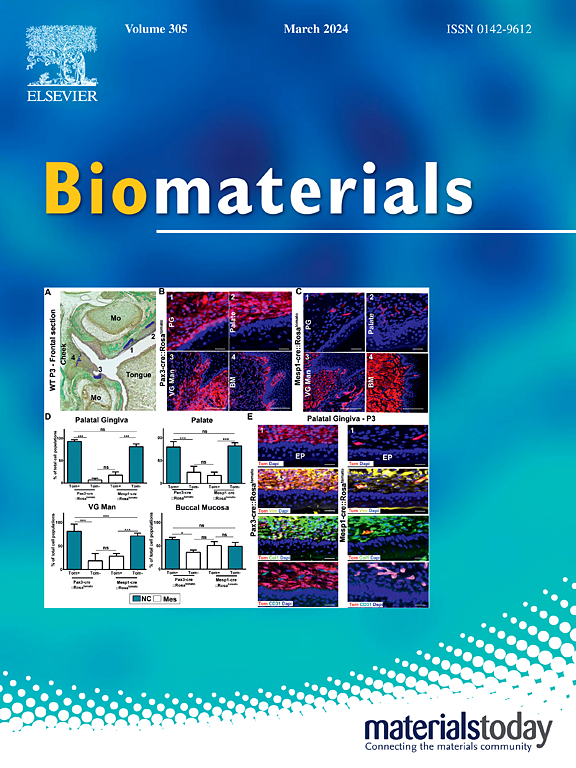Micropore structure engineering of injectable granular hydrogels via controlled liquid-liquid phase separation facilitates regenerative wound healing in mice and pigs
IF 12.8
1区 医学
Q1 ENGINEERING, BIOMEDICAL
引用次数: 0
Abstract
Biomaterials can play a crucial role in facilitating tissue regeneration, but their application is often limited by that they induce scarring rather than complete tissue restoration. Hydrogels with microporous architectures, engineered via 3D printing techniques or particle packing (granular hydrogels), have shown promise in providing a conducive microenvironment for cellular infiltration and favorable immune response. Nonetheless, there is a notably lacking in studies that demonstrate scarless regeneration solely through pore structure engineering. In this study, we demonstrate that optimizing micropore structure of injectable granular hydrogels via controlled liquid-liquid phase separation facilitates scarless wound healing. The building block particles are fabricated by precisely controlling the separation kinetics of two immiscible aqueous phases (gelling and porogenic) and timely arresting phase separation, to generate bicontinuous, hollow or closed porous structure. Employing a murine model, we reveal that the optimized pore structure significantly facilitates mature vascular network boosts pro-regenerative macrophage polarization (M2/M1) and CD4+/Foxp3+ regulatory T cells, culminating in scarless skin regeneration enriched with hair follicles. Moreover, our hydrogels outperform the clinical gold-standard collagen/proteoglycan scaffolds in a porcine model, showcasing superior cell infiltration, epidermal integration, and dermal regeneration. Micropore structure engineering of biomaterials presents a promising and biologics free pathway for tissue regeneration.
求助全文
约1分钟内获得全文
求助全文
来源期刊

Biomaterials
工程技术-材料科学:生物材料
CiteScore
26.00
自引率
2.90%
发文量
565
审稿时长
46 days
期刊介绍:
Biomaterials is an international journal covering the science and clinical application of biomaterials. A biomaterial is now defined as a substance that has been engineered to take a form which, alone or as part of a complex system, is used to direct, by control of interactions with components of living systems, the course of any therapeutic or diagnostic procedure. It is the aim of the journal to provide a peer-reviewed forum for the publication of original papers and authoritative review and opinion papers dealing with the most important issues facing the use of biomaterials in clinical practice. The scope of the journal covers the wide range of physical, biological and chemical sciences that underpin the design of biomaterials and the clinical disciplines in which they are used. These sciences include polymer synthesis and characterization, drug and gene vector design, the biology of the host response, immunology and toxicology and self assembly at the nanoscale. Clinical applications include the therapies of medical technology and regenerative medicine in all clinical disciplines, and diagnostic systems that reply on innovative contrast and sensing agents. The journal is relevant to areas such as cancer diagnosis and therapy, implantable devices, drug delivery systems, gene vectors, bionanotechnology and tissue engineering.
 求助内容:
求助内容: 应助结果提醒方式:
应助结果提醒方式:


